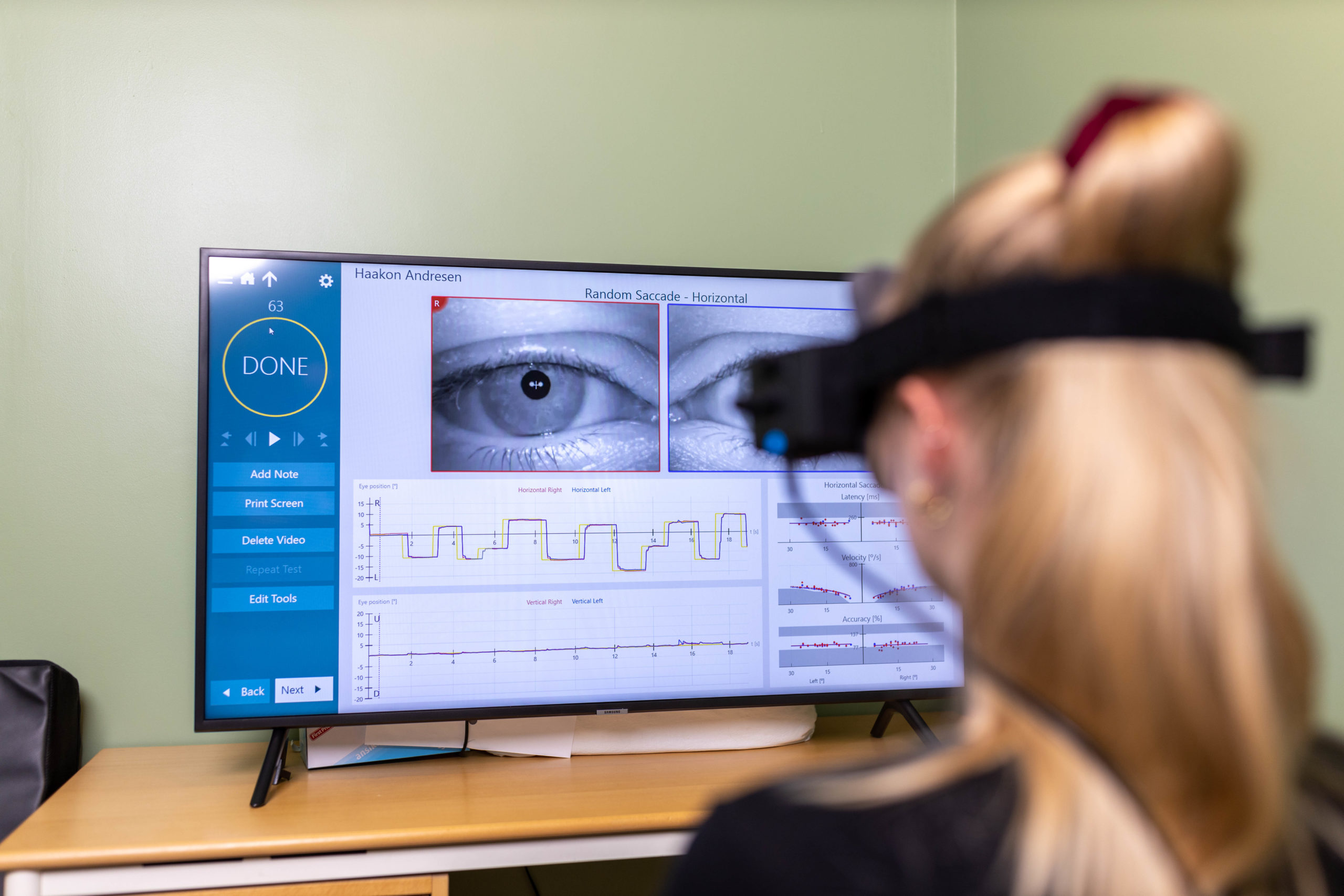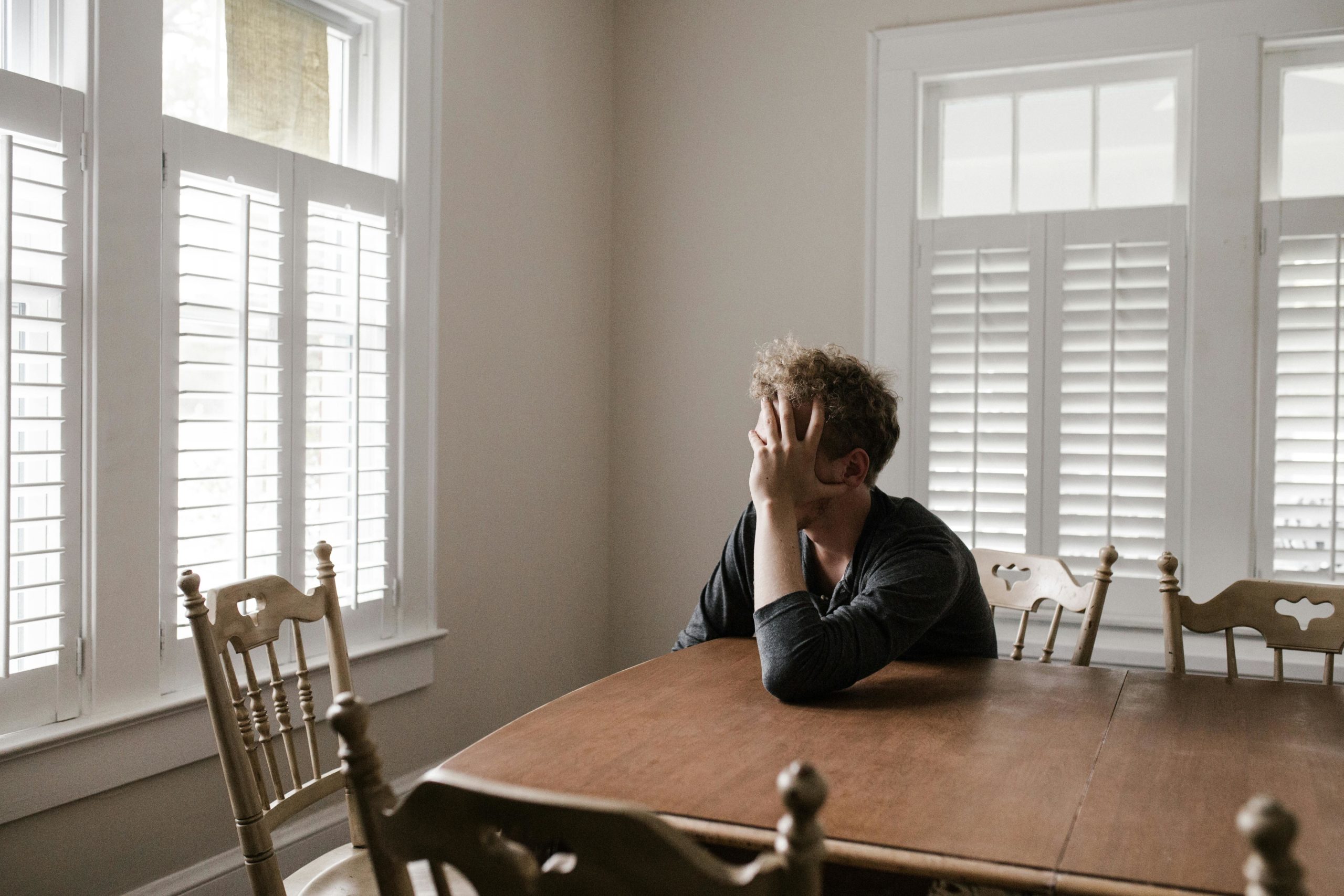Like a wave rolling in over the beach, a concussion can be overwhelming and unnoticeable at the same time. The initial symptoms may seem transient and harmless, but the consequences beneath the surface may need in-depth attention and treatment.
Symptoms can be diffuse.
That's why it's essential to recognize the seriousness of a concussion early on. A thorough evaluation and organized rehabilitation can promote the healing process and recovery of function.
What is a concussion?
A concussion, medically known as commotio cerebri, is a form of mild traumatic brain injury (mTBI). A concussion can occur without a direct blow to the head. It is caused by a force that impacts the head, whether it is a blow to the head, face, neck or other parts of the body.
Concussion does not affect the structure of the brain. Persistent symptoms and complaints are due to communication failure and reduced blood supply to the brain. MRI, CT and X-rays rarely show any findings.
Concussion can lead to various clinical signs and symptoms, including loss of consciousness, but fainting is not necessary.
Typically, concussions last 10-14 days in adults and 3-4 weeks in children. If symptoms persist beyond this, the diagnosis may be changed to post-concussion syndrome (PCS). Proper diagnosis and treatment is important for rehabilitation and prevention of long-term symptoms.

Definition and causes
Concussion, or commotio cerebri, is a type of mild traumatic brain injury that occurs after a strong impulse to the head or neck/body. It disrupts normal brain function and can cause various symptoms.
The causes of a concussion are often falls, accidents or sports-related impacts to the head. The head trauma involved leads to a rapid acceleration and deceleration of the brain inside the skull.
A concussion can alter the brain's chemical processes and affect neural networks.
Just like other tissues in the body, the brain can be damaged and needs time to heal. People with concussions can experience everything from headaches and difficulty concentrating to changes in behavior. A thorough and tailored approach to treatment is often necessary to support the healing process, as no two concussions are the same.
Identification of risk factors
In order to prevent concussions, it is crucial to be aware of the presence of certain risk factors.
- Previous head injuries - repetitive trauma to the head significantly increases the risk.
- Contact sports - sports like football and hockey involve more frequent and harder collisions.
- Gender - women report concussions more often than men and may have increased sensitivity.
- Young age - children and young adults have softer brain tissue and may be more susceptible to injury.
- Poor equipment - inadequate or incorrect use of protective equipment provides less protection.A thorough assessment of these risk factors can contribute to more targeted prevention.Knowledge of risk factors is central to early intervention and reducing the likelihood of complications. Research shows that identifying and adapting activities in line with the risk profile can be key to minimizing the risk of concussion.
Concussion symptoms
A concussion is a form of mild traumatic brain injury that can cause a varied symptom complex. Some signs are immediately visible, such as headache, nausea and disorientation. Others may be more subtle and develop over time, such as memory problems, difficulty concentrating or mood swings. It is crucial to recognize these early indications in order to initiate prompt and appropriate treatment.
Prolonged or repetitive symptoms require an in-depth understanding and approach. In some cases, what seems like a "simple concussion" may actually indicate a more serious condition that requires specialized follow-up. It is essential to observe for changes in behavior, sleep difficulties and sensitivity to light or sound. Correct interpretation and coherent evaluation of these signs is central to an effective rehabilitation process.
Early Signs
Symptoms of a concussion often occur quickly and can vary in intensity. There is scientific evidence that rapid recognition determines the prognosis.
-

Headaches that can range from mild to intense
- Dizziness
- Stiffness or pain in the neck
- Disorientation or confusion, including difficulty remembering recent events
- Nausea or vomiting shortly after the injury
- Fatigue or drowsiness, feeling of being in a "fog"
- Visual disturbances such as blurred vision or double vision
- Balance or coordination problems
- Sensitivity to light or sound
- Changes in behavior such as irritability or depression
Early intervention can prevent complications and improve the outcome of rehabilitation.
It is essential to take all symptoms seriously and seek professional help as soon as possible. A concussion should never be underestimated as it can have long-lasting effects.
Tips for acute concussion
NB: In case of loss of consciousness, dizziness, severe headache, difficulty speaking, involuntary or spastic movements, confusion, memory loss, vomiting and persistent nausea, clear fluid from the ear or visual disturbances, hospital/emergency room should be contacted immediately.
The first 48 hours:
- Avoid physical and cognitive exertion.
- Limit the use of screens such as TV, computer, mobile phone, and avoid music, podcasts, work or school activities.
After the first 48 hours:
- Gradual increase of physical and cognitive exertion, especially sub-symptomatic aerobic exercise.
- A slight increase in symptoms is not dangerous or harmful.
Nutrition:
The first 48 hours:
- Make sure you get a minimum of 9+ hours of sleep.
- Try intermittent fasting for 16-18 hours.
- Avoid sugar.
- Consider a keto diet and ketones.
The first few weeks:
- Limit your carbohydrate intake to a minimum for the first 2-3 weeks.
- Avoid processed food and sugar for the first 2-3 weeks.
- Avoid alcohol for the first 3-4 weeks.
Dietary supplements:
The first 24-48 hours:
- Omega 3: 750 mg - 2.8 g per day for 4-6 weeks.
- Vitamin D: 160 μg for 2-4 weeks.
- Magnesium L-threonate: 2-4 capsules every night for 3 weeks for adults.
Long-term effects and PCS
After a concussion, long-term effects can vary and affect both physical and cognitive function. Persistent symptoms may indicate post-concussion syndrome (PCS). If symptoms last longer than 2-3 weeks for adults and 3-4 weeks for children, you should consult a specialist in post-concussion rehabilitation.
Post-commotio syndrome (PCS): PCS can include chronic headaches, neck pain, fatigue, tiredness, fatigue, dizziness, difficulty concentrating and irritability. Treatment requires a customized approach with careful follow-up.
Recovery from concussion can be unpredictable, with some people experiencing symptoms for months or years. A holistic approach that includes supportive treatment, gradual return to normal activities, and collaboration between patient, healthcare provider and employer is essential for optimal rehabilitation. With patience and targeted neurological rehabilitation, significant progress can be achieved.
Read more about our approach to concussion rehabilitation here: https://www.kvantumklinikken.no/hjernerystelse-post-commotio/
Treatment approaches
A tailored treatment plan is critical to manage the varied symptoms that occur after a concussion. It is important to start with a careful assessment of the individual's specific needs, then design a treatment strategy that may involve specific eye-hand coordination, balance exercises, eye exercises, vestibular rehabilitation, low-level electrostimulation and low-level laser therapy, spinal manipulation and some cognitive training, depending on the nature and severity of the injury. Cognitive rest and a gradual increase in physical activity are often recommended in the initial phase, while more specialized interventions can be incorporated as the patient improves. Patient engagement and active participation in the rehabilitation process is crucial, and encouragement and positive reinforcement from healthcare professionals helps to build motivation and confidence in their own healing process.

video oculography
First aid and emergency care
If a concussion is suspected, immediate reaction is essential. The patient should be secured in a stable position and protected from further injury. It is important to emphasize that unconsciousness is not necessary for a person to have suffered a concussion.
In the acute phase, it is important to observe symptoms such as change in consciousness, nausea, balance problems or abnormal behavior. The patient should be transported to the nearest hospital for a thorough medical evaluation. Healthcare professionals will provide the necessary monitoring and diagnostics to determine the extent of the injury and determine the next steps in treatment. Providing reassurance to the patient during transportation is also important, while keeping them awake if they are conscious.
Immediately after the injury, a head scan may be required to rule out serious complications such as bleeding or brain swelling. Adequate monitoring and good communication between patient and healthcare provider promotes safety and helps to identify symptoms that may occur in the aftermath of the injury.
Further treatment may involve controlled rest periods for the brain, followed by gradual reintroduction of mental and physical activities. It is crucial that the patient is educated on the importance of carefully following healthcare professionals' advice to avoid complications and promote recovery. A tailored rehabilitation, focusing on both physical and mental recovery, will be central to achieving the best possible outcome.
Medical Intervention
Immediate rest is essential for brain recovery.
After the initial phase of rest, individual assessment is often required to adapt the rehabilitation plan to the patient's needs. This may include neurological rehabilitation, cognitive therapy, and occupational training depending on the nature of the injury and the patient's symptoms. Specialized healthcare professionals play a key role in designing an effective and patient-centric approach.
The gradual increase in activity must be carefully monitored. It is important that the patient and close relatives receive good information about resuming daily activities and that the body's signals are listened to in order to avoid deterioration.
To achieve the best possible outcome from treatment, it is essential to combine different modalities in the treatment based on the latest research and best practice guides in concussion management. Collaboration across medical disciplines ensures a holistic and targeted rehabilitation process.
The rehabilitation process
Rehabilitation after a concussion is a dynamic process that requires patience and adaptation. It often starts with a period of rest and a gradual increase in physical and mental strain, where the patient's response is carefully monitored.
For many, the road back to everyday life is characterized by fluctuations in the intensity of symptoms. Therefore, the rehabilitation programme is individualized and can be adjusted as the patient's condition changes. Close follow-up from specialized healthcare professionals is crucial to ensure optimal progression and prevent relapses.
During rehabilitation, the patient can benefit from various therapeutic interventions. The effect of these interventions is continuously evaluated to achieve the best possible functional ability and quality of life.
Back to Daily life
Reintegrating into everyday activities after a concussion requires a carefully designed plan. Gradually increasing the load is key.
- Avoid situations that can cause a new head injury
- Implement rest breaks throughout the day to avoid fatigue
- Organize daily routines to reduce mental stress
- Use time to help you and increase your activity level as you improve
- Communicate with your family and employer about your limitations
Adequate sleep is essential for the brain's healing process.
Support from family, friends and the workplace is crucial for a successful return to normal life.
Prevention of Future Damage
Preventing future injuries after a concussion involves awareness of risk factors and appropriate interventions. It is essential to take care of your own health and safety.
Compliance with safety routines in sporting and daily activities is central to the preventive work. Wearing a helmet when cycling, skating or in alpine sports, as well as providing safety equipment in work situations where relevant, can be crucial to avoid new head injuries. In addition, it is important to adapt the home and work environment to minimize the risk of falls, especially where balance and coordination may be reduced after the injury.
Strengthening the neck and back muscles through targeted exercise can also help to reduce the risk of future concussions. A strong musculature can better support the head and thus minimize the force of any blows to the skull. Training in fall techniques and correct body positioning in situations where there is a risk of collisions can also be beneficial.
Finally, it's important to prioritize concussion prevention as an ongoing process, not a one-off measure. This means regularly evaluating and updating safety measures, both personally and in the community. Involving both individuals and organizations in prevention efforts and awareness campaigns can raise awareness and lead to safer environments for everyone. This is how we maintain a focus on long-term health and minimize the risk of repeated concussions, which can have long-lasting consequences.



